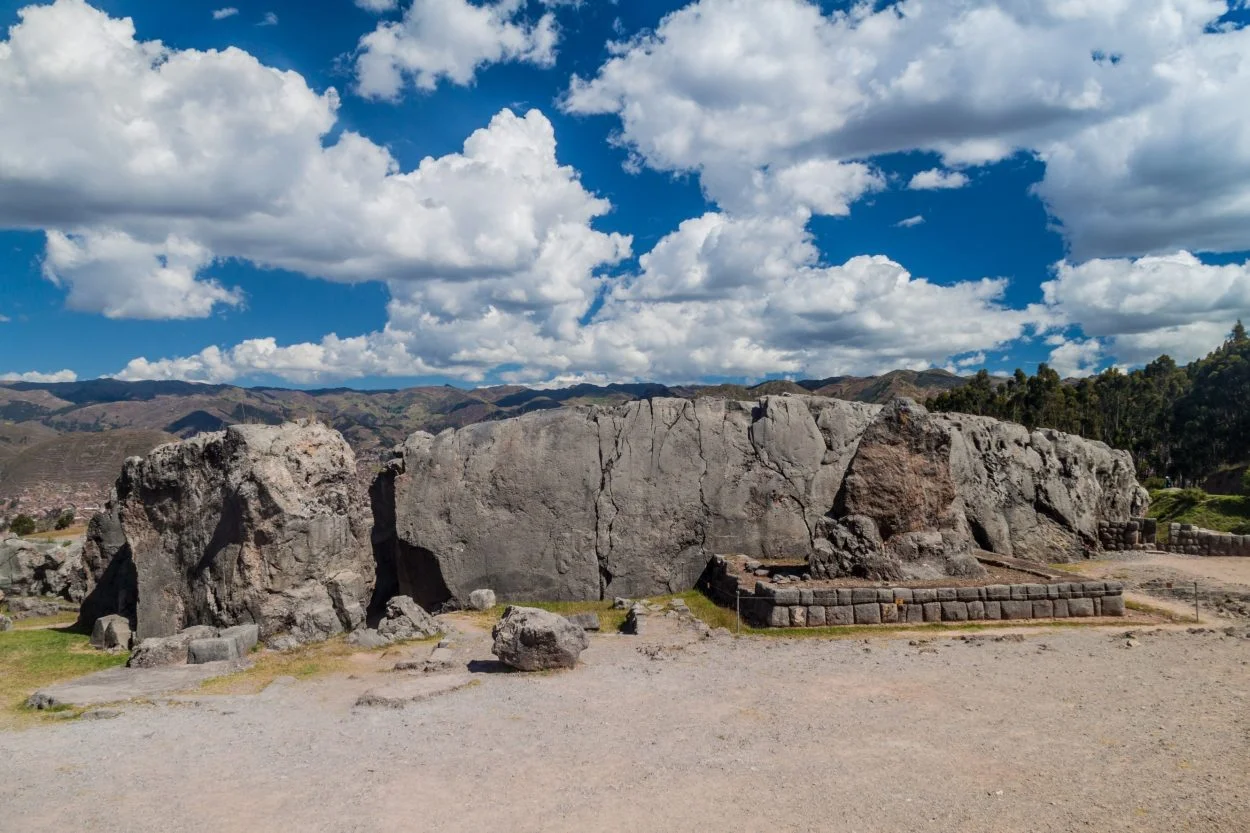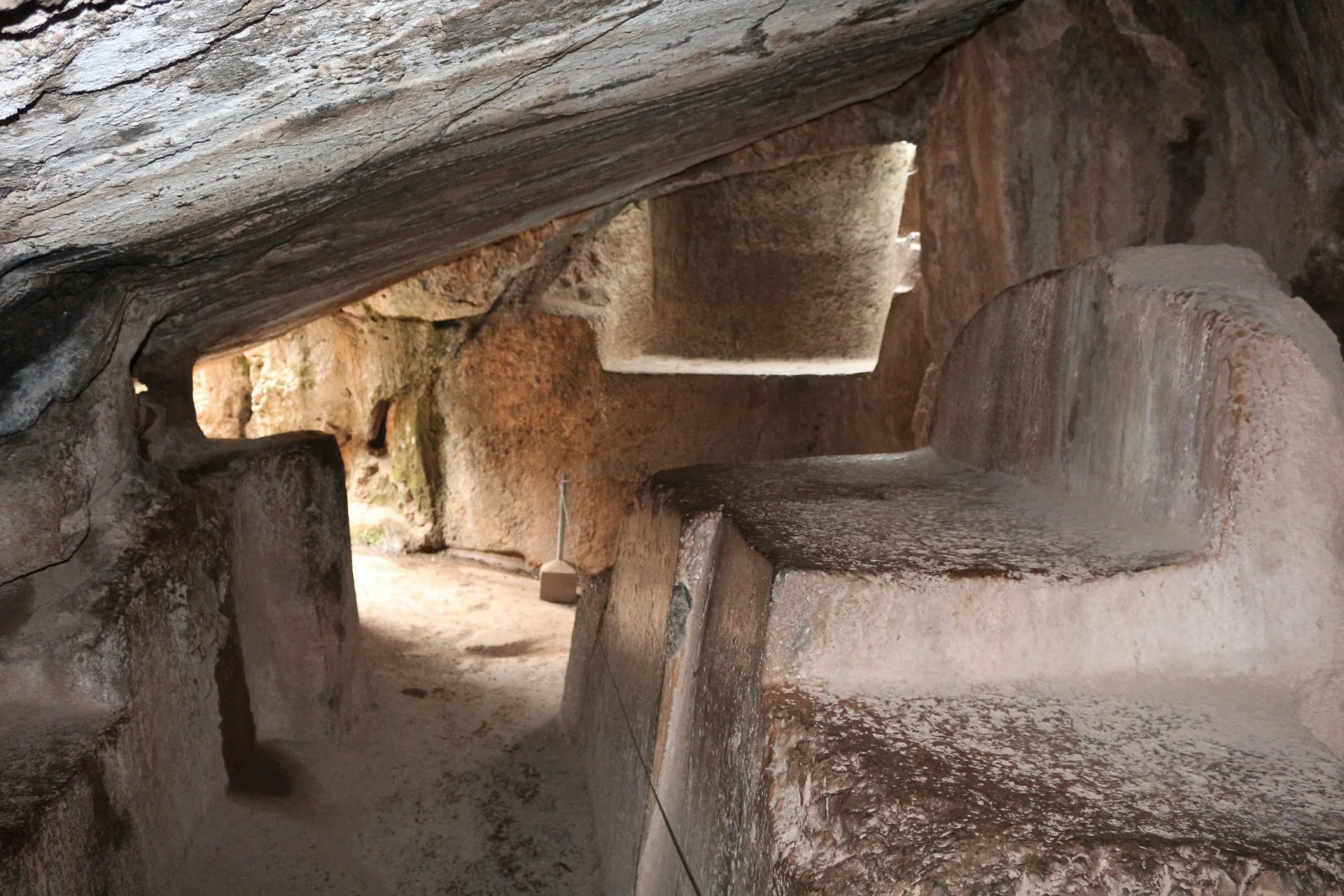Q’enqo, also called Qenko, is an extensive huaca/wak’a rock-cut complex, located near the former Inca capital of Cusco (Qusqu) in the Cusco Region of Peru.
Huaca were often built along a processional ceremonial line or route. Such lines were referred to as ceques, and ran outward from a total of 41 or 42 known pathways radiating from the Qurikancha or sun temple in Cusco.
The greater Q’enqo complex consists of several sites, including Q’enqo Grande, Q’enqo North, Q’enqo West, and Q’enqo Chico.

Dating of the complex has proven problematic, but many scholars propose that they may have been constructed during the reign of Pachacuti Inca Yupanqui (AD 1418-1471/1472), the ninth Sapa Inca who transformed the Kingdom of Cusco into the Inca Empire.
Q’enqo Grande is the most notable of the huaca, consisting of a large carved outcrop overlooking a raised platform in a semi-circular plaza, and a square structure that incorporates a basin or bath.
To the north of the plaza is a concave wall constructed of Imperial Cusco masonry. The wall has nineteen niches that may have been used as seating for Inca elite, or for ancestral mummies during semi-public ceremonial gatherings.

Running through the main outcrop is a natural crevice that spans the rock mass in an east-west direction. This descends down to a sculpted interior cave-like chamber containing a rectangular carved block or altar.
It has been suggested that the site was used for burials as the Inca perceived cave entrances as a place from which the first ancestors came, and often buried their dead in caves so that the souls could return to reside there.
This is supported by studies conducted during the 1930’s by the Peruvian anthropologist, Luis Valcarcel, who discovered several human remains in the chamber.
Header Image Credit : Andy Griffin – Shutterstock





